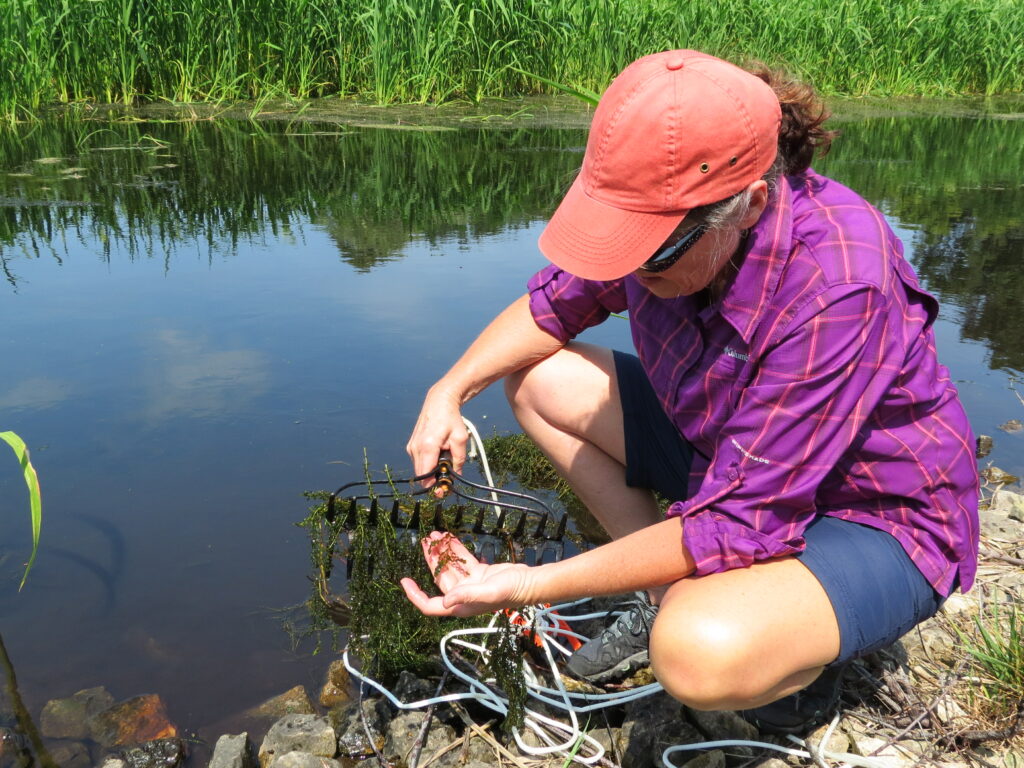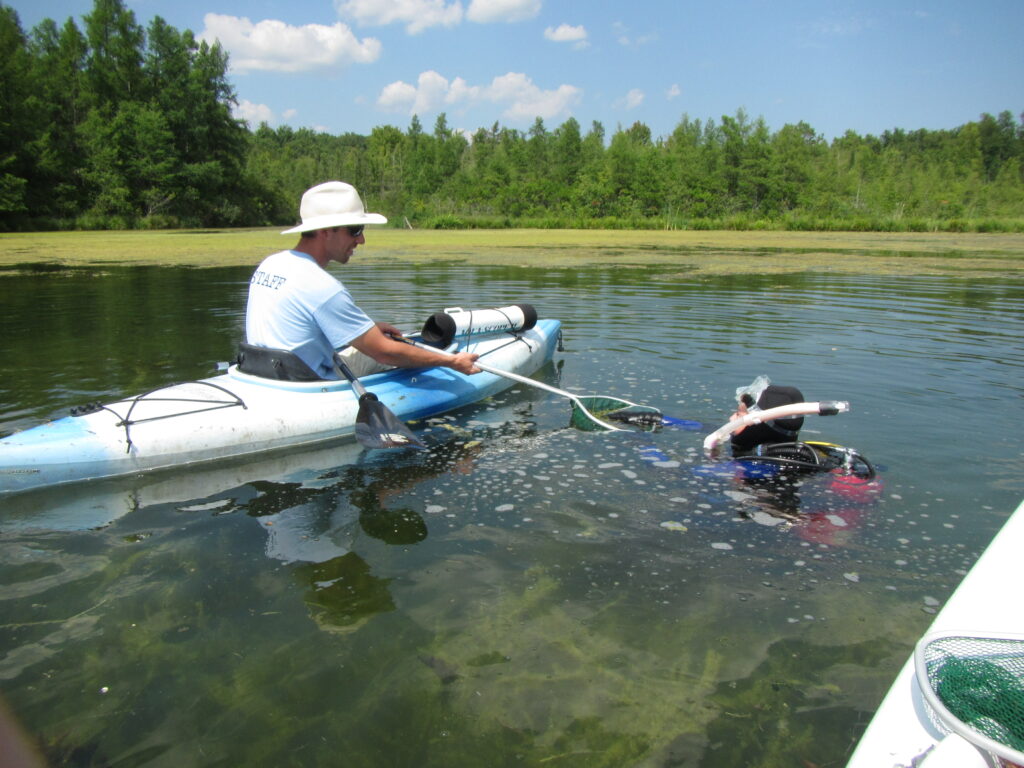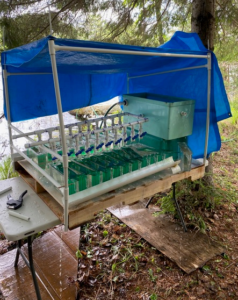Negative emotions drive preference for herbicide treatments for aquatic invasive species in Wisconsin lakes

A volunteer looks through a plant rake for invasive species. Monitoring like this is one of the most underrated management actions when invasive species are found in lakes. Image credit: Paul Skawinski
A new study published by University of Wisconsin-Madison researchers is the first to explore what drives lakeshore property owners’ preferences for herbicide treatments of aquatic invasive plants over other management options, even if those treatments may harm native plants and animals. The study found that negative emotions and believing that aquatic invasive species are present in the lake where a property owner lives were the strongest predictors for preferring herbicide treatments. Surprisingly, perceived impacts of aquatic invasive species did not affect preferences for herbicidal treatment of aquatic invasive species.
These results provide an opportunity for natural resource managers to educate lakeshore property owners about alternative methods for managing aquatic invasive plants while still leaving options open for herbicide treatment, if needed. Other management options include manual and mechanical removal as well as simply monitoring, since non-native plants can often co-exist with other native plants in a lake without taking over and becoming a nuisance.
“People can develop negative emotions about a subject either through lived experiences or through communications about the subject,” said Bret Shaw, lead author and a Division of Extension environmental communications specialist and Department of Life Science Communication professor. “Given that the perceived impact of invasive species is not driving preference for using herbicides, it is possible that fear-based aquatic invasive species prevention messages may influence higher risk perceptions that cause property owners to seek herbicidal treatment first. Considering other approaches and messaging strategies, too, may help lake organizations achieve better outcomes with their management efforts.”
Aquatic invasive plants in Wisconsin lakes can negatively impact recreation and property values. Many organizations offer education and outreach programs for boaters and anglers to prevent invasive species spread. However, some lakes already have non-native species that can become invasive, and new introductions can occur despite widespread prevention efforts. While there are many ways to manage aquatic invasive plants, lakeshore property owners and lake associations often seek permits to use chemical herbicides even though herbicides themselves can carry a potential risk of ecological harm to the treated lake, which is why herbicides may not necessarily be an appropriate as a first course of action in some waterbodies.

A diver and kayaker remove Eurasian watermilfoil from Spring Lake in Wisconsin. Image credit: Paul Skawinski
Aquatic invasive species are a concern both globally and in Wisconsin, with the Great Lakes on Wisconsin’s borders and another 15,000 inland lakes within them. While the most problematic invasive species aren’t present in most lakes, where they are located, they can reach high densities that can impede boating, negatively affect fishing and alter the ecological functions of a lake. More than $5 million is spent each year in Wisconsin on aquatic invasive species management. However, even with this annual investment and the negative impacts of aquatic invasive species, very little effort has been spent understanding how waterfront property owners feel and think about invasive species management.
“This research is among the first to understand the opinions and beliefs of waterfront property owners about aquatic invasive species management,” said Tim Campbell, the aquatic invasive species program manager for Wisconsin Sea Grant and co-author of the study. “The results of this research will help us create invasive species management education tools and programs that balance efforts to reduce the unwanted impacts of invasive species while protecting the ecological integrity of our lakes.”
Other co-authors include Dominique Brossard, Professor in the Department of Life Sciences Communication (LSC) as well as recent LSC graduate students, Richard Heinrich (LSC Ph.D. ‘23) and Theresa Vander Woude (LSC and Nelson Institute for Environmental Studies, M.S. ‘21). The full study can be found in the journal Biological Invasions here (https://rdcu.be/dvWb9). Alternatively, email tim.campbell@wisc.edu for a copy.
The post Negative emotions drive preference for herbicide treatments for aquatic invasive species in Wisconsin lakes first appeared on Wisconsin Sea Grant.News Releases | Wisconsin Sea Grant
News Releases | Wisconsin Sea Grant
https://www.seagrant.wisc.edu/news/negative-emotions-drive-preference-for-herbicide-treatments-for-aquatic-invasive-species-in-wisconsin-lakes/


